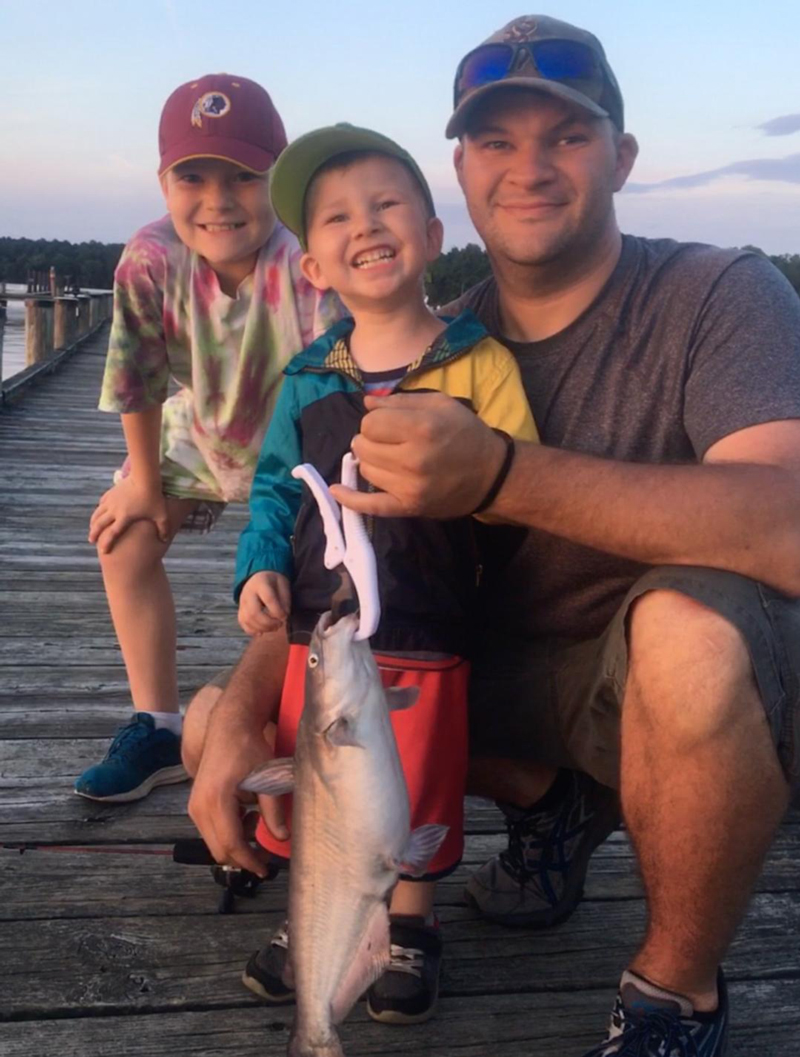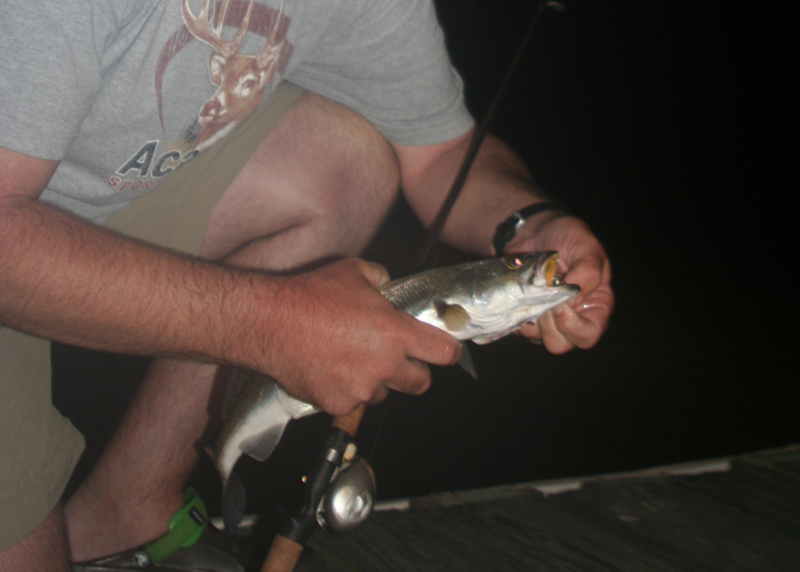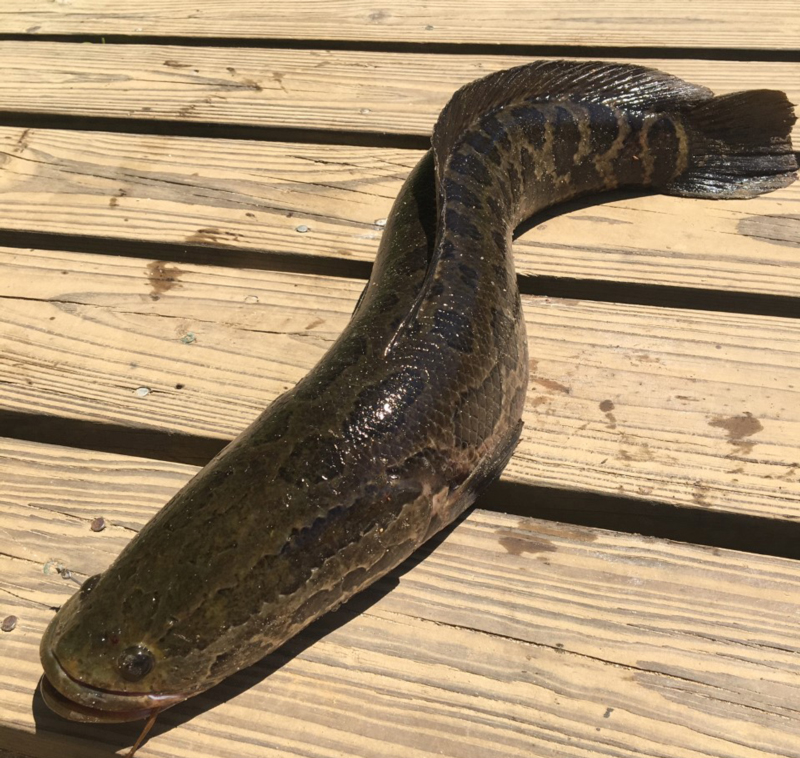Pier fishing takes many forms, ranging from casting from a dock in a farm pond, to strolling down the Route 50 bridge into Ocean City, to standing above crashing oceanic breakers on the Virginia Beach Fishing Pier. But no matter what sort of fishing you’re into, if you don’t have a boat at your disposal hitting a pier is one of the best ways to gain access to open waters and bent fishing rods. Consider these top 10 pier fishing tips, and you might just find that your rods bend even more than they did before.

Match the Hatch by Making a Catch - It can be tough for pier anglers to liveline with anything beyond minnow, since portable livewells full of water weigh quite a bit. Plus, those big enough to keep large baits like spot alive can also be rather pricey. However, that doesn’t mean you can’t offer up primo live baits that the nearby predators are hunting for. Simply catch it on the scene. If you’re fishing on the Chesapeake, for example, have a bottom rig with number-six hooks and some bloodworm or Fishbites ready to go. Also have your livelining rig pre-prepped. When you catch a spot, take it off one hook and put it right onto the other, then send it back out there. This works great for larger fish in freshwater lakes, too, if you catch a small bluegill then pitch it back out.
- Get a Move On - We’re going to start out with one of the most basic but critical pier fishing tips of all: if you’re fishing bait but not getting bites, move your bait. Many anglers cast out, sit their rod down, and wait for a bite. That’s fine in some cases, but quite often your catch rate will skyrocket if you slowly creep your rig along bottom, or cast it out then hop it back. Doing so also allows you to “explore” different areas of the bottom and quite often you’ll discover a hot zone where you always seem to get a strike. Then, you can focus your efforts there.
- Cast Less, Drop More - Sometimes the best move is to send your offering sailing out as far as possible, but sometimes dropping it right next to the pier pilings is an even better move. In many cases fish will be hiding right under the pier to enjoy its shade, the protection of the structure, or to feed on the critters that grow on the pilings themselves. It’s not at all unusual to catch more fish dropping straight down rather than casting far out.
- Try Pier Trolling - When sitting in one spot and watching your rod tips proves ineffective, it’s time to go mobile. Drop your lure or bait, close the bail, and begin walking up or down the pier while towing your offering along. As you walk it can also be helpful to pump your rod up and down to give some extra action. Naturally this tactic isn’t one you can try on a crowded pier where it will interfere with other anglers, but when the proper situation presents itself, pier trolling can be an excellent way to generate bites.
- Get a Read - When you arrive at a pier you’ve never fished before, walk its entirety before choosing any one spot and look closely for signs of fish. Gathering intel by talking with the folks you meet will help, of course, but you can also learn a lot where no one is present by spying for bloodstains and smatterings of scales. These are indications that some angler had success at that particular spot in the recent past. You can also peek at bait cuttings on the rails to find out what the local favorite offerings are. And bird droppings can clue you in to areas that offer little action, since gulls will gather where people don’t usually fish.
- Try Pier Chumming - Boats set chum over the side to attract fish to the area, so why can’t you do the same on a pier? You can — and it can generate quite a bit of additional action. Note that chumming generally won’t accomplish much in freshwater bodies of water or in areas where there is no current, although there are exceptions. (Carp anglers sometimes chum with corn, and catfish anglers with ground mud shad).

This speckled sea trout was lured into casting range by pier chumming with bits of shrimp. - Match the Hatch by Making a Catch - It can be tough for pier anglers to liveline with anything beyond minnow, since portable livewells full of water weigh quite a bit. Plus, those big enough to keep large baits like spot alive can also be rather pricey. However, that doesn’t mean you can’t offer up primo live baits that the nearby predators are hunting for. Simply catch it on the scene. If you’re fishing on the Chesapeake, for example, have a bottom rig with number-six hooks and some bloodworm or Fishbites ready to go. Also have your livelining gear pre-prepped. When you catch a spot, take it off one hook and put it right onto the other, then send it back out there. This works great for larger fish in freshwater lakes, too, if you catch a small bluegill then pitch it back out.
- Extend Your Reach - Remember how we mentioned early on that sometimes the best fishing is right below your feet? Other times, making the longest cast possible will mean the difference between catching fish and catching a skunk. When you’ll be in a casting situation consider bringing the longest rod possible. Longer rods do translate into farther casts, all other things being equal. Note we say “longer,” not “bigger.” Line size will also have an effect (the smaller the diameter the farther the fling) and limber tips will help you gain a slingshot effect when you cock back to cast.
- Net Results - Pier anglers have a big disadvantage as opposed to shoreline and boat anglers in that they have to reel their fish up through the air. The standard tactic is to point your rod straight down while taking up all slack when you get the fish to the surface. Get that tip as low as possible, and swing the fish up and onto the pier in one motion with as little air-time as possible. When you have a big fish on the line, however, this is a recipe for disaster. Instead consider getting a “bridge net.” These are circular nets you can lower down into the water, direct the fish over the mesh, then lift up on the rope to “scoop” the fish. Bonus Tip: savvy pier anglers will lower their net to just below the water’s surface and leave it there while they fish. Then when there’s a hookup, the net will already be deployed and ready for action.
- Pole Position - Before you choose a spot, consider the wind and/or current. Situate yourself with the wind at your back and all your casts will go farther. Pick a place on the up-current side of a pier and you can let that current sweep your bait under the structure where fish may be hiding. Which spot will prove best depends on the situation and the quarry, but always think about how these factors will affect you before settling in and/or deciding to make a move.
- Dead Ends - In many situations the very end of the pier will be the choice spot, but this isn’t always true. On piers in the ocean, casting parallel to and just behind the surf line will often produce more fish than the spots farther out. And in all sorts of waters if the pier extends beyond an abrupt drop-off you may be better served by stopping at the depth change as opposed to heading out beyond it. Yes, sometimes farther is better, but make sure that’s the case before you plant yourself at the very end of any pier.

BONUS TIP: If you have a private pier on a Bay tributary you fish off of, consider getting an oyster float or two. Not only will growing the oysters help improve water quality and provide you with an awesome wintertime seafood dinner, it will also attract minnow, grass shrimp, and tiny crabs, jump-starting the food chain and attracting predators. (Learn more about "oyster gardening.") DOUBLE-BONUS TIP: If you already have an oyster float, give it a good shake every now and again as you fish. This will dislodge a lot of the little critters hiding in there and send any fish nearby into feeding mode.